World Cafe Live
3025 Walnut Street
Philadelphia, PA 19104
6:00pm
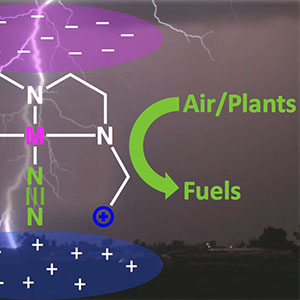 Neil Tomson
Neil TomsonChemistry, University of Pennsylvania
“Chemical Lightning: Using Electrostatic Fields to Make Alternative Fuels”
The sourcing, management and efficient use of energy poses one of the greatest long-term challenges to societal stability. The economic impact alone of damage caused by rising global temperatures is projected to reach $1 trillion/year by 2050 in the United States. The most promising method for mitigating the effects of man-made climate change is to decrease our reliance on fossil fuels by generating renewable fuel sources, but the chemicals used to synthesize these fuels can be difficult to break apart and rearrange into useful forms. The research presented in this talk is aimed at using strong, local electrostatic fields to help catalyze the transformation of small molecules – like those found in the air and plant matter – into alternative fuels, including ammonia, methanol, and hydrogen.
Stoney’s British Pub
3007 Concord Pike
Wilmington, DE
7:30pm
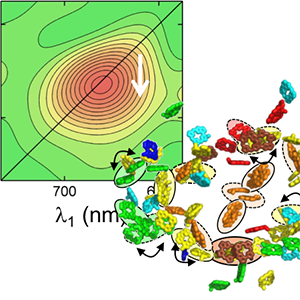 Jessica M. Anna
Jessica M. AnnaUniversity of Pennsylvania
“From Photosynthesis to Photovoltaics: Learning about Solar Energy Conversion from Photosynthesis”
Photosynthetic organisms have developed the molecular level machinery to convert solar energy into chemical bonds. The first step in this process is light harvesting, where pigment-protein complexes absorb sunlight and convert this energy into a charge separated state. Understanding the process by which these natural photosynthetic complexes create the charge separated state may lead to insight into the design of artificial photosynthetic systems and development of new technologies for solar energy conversion. In this talk I will discuss some of our recent studies in this area, where we use ultrafast multidimensional spectroscopy to gain insight into the very first steps of light harvesting in photosystem I – one of nature’s most efficient energy converters.
World Cafe Live
3025 Walnut Street
Philadelphia, PA 19104
6:00pm
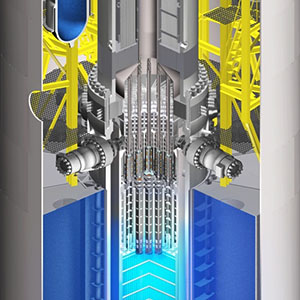 Harold Gray
Harold GrayNuclear Regulatory Commission
“Electricity Generation from Nuclear Power Reactors”
Nuclear heat generates about 20% of the electricity used in the USA. In this region that percent is higher with 7 nuclear generating stations within 50 miles of northern Delaware. The USA, through the NRC, issues a license for each plant to operate and also owns the fuel. The NRC’s role is to promote safety by monitoring plant operation through inspection and analysis.
This talk includes how nuclear plant systems generate steam to drive the turbines that produce electricity. This will cover large plants that produce 1200 MW or more from either Pressurized Water Reactors, PWRs, or Boiling Water Reactors, BWRs, to innovative small modular reactors, SMRs, producing up to 50 MW per segment, as future, stand-alone units that can power a small town and which could be bundled, if necessary, to produce up to 300 MW.
Stoney’s British Pub
3007 Concord Pike
Wilmington, DE
7:30pm
 Harold Gray
Harold GrayNuclear Regulatory Commission
“Electricity Generation from Nuclear Power Reactors”
Nuclear heat generates about 20% of the electricity used in the USA. In this region that percent is higher with 7 nuclear generating stations within 50 miles of northern Delaware. The USA, through the NRC, issues a license for each plant to operate and also owns the fuel. The NRC’s role is to promote safety by monitoring plant operation through inspection and analysis.
This talk includes how nuclear plant systems generate steam to drive the turbines that produce electricity. This will cover large plants that produce 1200 MW or more from either Pressurized Water Reactors, PWRs, or Boiling Water Reactors, BWRs, to innovative small modular reactors, SMRs, producing up to 50 MW per segment, as future, stand-alone units that can power a small town and which could be bundled, if necessary, to produce up to 300 MW.
World Cafe Live
3025 Walnut Street
Philadelphia, PA 19104
6:00pm
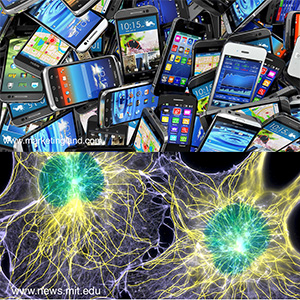 Peter J. Collings
Peter J. CollingsPhysics, Swarthmore College and University of Pennsylvania
“Liquid Crystals: Can’t Live With Them, Can’t Live Without Them!”
In addition to the solid, liquid, and gas states of matter, some substances form a fourth state of matter between the solid and liquid states. This “liquid crystal” state of matter is fluid like a liquid, but possesses structure like a solid. The combination of fluidity and order is what allows high-resolution, low power-consuming LCD displays to be fabricated. The quality and prevalence of devices that rely on an LCD display have literally changed the way people go about their lives, making everyone wonder at times if living with them is not entirely a change for the better. In addition, the combination of fluidity and order is what allows many biological structures to function properly, including cell membranes, chromosomes, micro-filaments, and muscles. Thus we are alive because life has taken advantage of the properties of liquid crystals.
Stoney’s British Pub
3007 Concord Pike
Wilmington, DE
7:30pm
 Peter J. Collings
Peter J. CollingsPhysics, Swarthmore College and University of Pennsylvania
“Liquid Crystals: Can’t Live With Them, Can’t Live Without Them!”
In addition to the solid, liquid, and gas states of matter, some substances form a fourth state of matter between the solid and liquid states. This “liquid crystal” state of matter is fluid like a liquid, but possesses structure like a solid. The combination of fluidity and order is what allows high-resolution, low power-consuming LCD displays to be fabricated. The quality and prevalence of devices that rely on an LCD display have literally changed the way people go about their lives, making everyone wonder at times if living with them is not entirely a change for the better. In addition, the combination of fluidity and order is what allows many biological structures to function properly, including cell membranes, chromosomes, micro-filaments, and muscles. Thus we are alive because life has taken advantage of the properties of liquid crystals.
3007 Concord Pike
Wilmington, DE
7:30pm
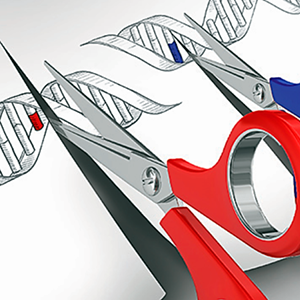 Ryan Frisch, Ph.D.
Ryan Frisch, Ph.D.Wilmington, DE
“The CRISPR Craze: What is it?”
New technologies are fundamentally changing how biologists understand organisms. One of the most prolific new technologies is the adaptation of a microbial adaptive immune response for precision genome targeting. The Clustered Regularly Interspaced Palindromic Repeats (CRISPR) system has been repurposed by biologists to allow rapid, precise, and inexpensive targeting of DNA within an organism. This has accelerated the ability to understand fundamental properties of living organisms, provide therapeutic solutions to genetic disease, and reduce vector born human diseases. This talk will focus on how this naturally occurring system has been adapted into a tool in the lab and discuss some of the most exciting uses of this new tool.
World Cafe Live
3025 Walnut Street
Philadelphia, PA 19104
6:00pm
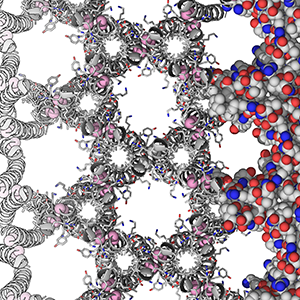 Jeffery G. Saven
Jeffery G. SavenChemistry, University of Pennsylvania
“Sculpting Protein”
The information in our genes, and those of all organisms, is encoded in polymers (DNA). This information is used to create other polymers: proteins. Many of these spontaneously fold and come together to form molecular machines, enzymes, and scaffolds. Attempts to understand and use this encoding can help us understand nature’s molecules, how to make complex natural systems easier to study, and how to create new tools, devices and materials using nature’s molecules. The design and sculpting of biopolymers and biomaterials will be discussed.
World Cafe Live
3025 Walnut Street
Philadelphia, PA 19104
6:00pm
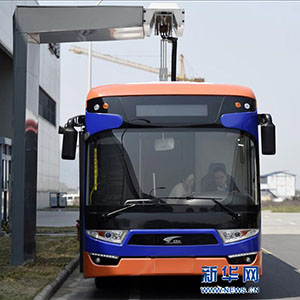 Jorge Santiago-Aviles
Jorge Santiago-AvilesUniversity of Pennsylvania
“The Importance of Batteries and Super Capacitors to the Electric Car and to an Efficient Power Grid”
Some important aspects of modern technology such as transportation and the efficiency of the power grid are strongly tied to new advances in charge storage technology. Most electric car manufacturers are attempting to obtain a range comparable to internal combustion driven cars, about 500 miles, and all are seeking the right battery / super capacitor for the task. Of course, load leveling, avoiding the cyclical increase in grid load due to seasons, and day / night load fluctuations are a most important concern. We will discuss batteries, energy and power densities and the two types of super capacitors used, electrical double layer and Faradaic.
Stoney’s British Pub
3007 Concord Pike
Wilmington, DE
7:30pm
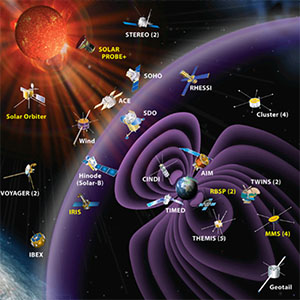 Bill Matthaeus
Bill MatthaeusUniversity of Delaware
“The Sun to the Earth and Beyond: Dynamics of the Plasma State of Matter”
The plasma state represents a fourth state of matter that may not be as familiar as solids, liquids and ordinary gases, but actually pervades most of the universe. From magnetars and accretion disks, to molecular clouds and planetary nebulae, the dynamics of matter in the plasma state determines much of what we see in the cosmos. Closer to home, in the solar system, plasma dynamics in the sun’s corona generates a very fast solar wind that blows out a huge bubble in the interstellar gas, creating the plasma heliosphere. Plasma dynamics controls the energetic particle and magnetic environment within this bubble, where our planet Earth resides.
After reviewing some general features of cosmic plasmas, this talk will focus on three challenging problems in heliospheric plasma physics. First we will discuss the peculiar way in which the coronal plasma is heated, thus generating the solar wind and creating the heliosphere. Second we will discuss how turbulent motions in the solar wind propagate out to the Earth and causing magnetic storms and Space Weather. Finally, as the solar wind continues outwards it pushes back galactic cosmic rays, which are a major hazard to long term travel in space. In this way the rhythmic cycle of solar activity exerts an important control over the Earth’s radiation environment.
World Cafe Live
3025 Walnut Street
Philadelphia, PA 19104
6:00pm
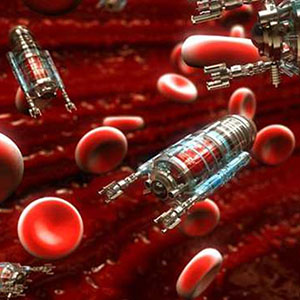 Paulo E. Arratia
Paulo E. ArratiaUniversity of Pennsylvania
“A Fantastic Voyage – From Bacteria to Micro-robots”
In 1966, the science fiction flick Fantastic Voyage had a submarine crew shrunk to microscopic size to travel through a person’s body to fight brain disease and remove a clot. Traveling in their miniaturized submarine, Proteus, the crew fights off the body’s immune system and successfully completes their task. Today, scientists and engineers around the world are trying to make this voyage a reality – or at least the good parts of it. In this talk, I will review a few fundamental ideas and concepts in trying to design microscopic sized robots and the many challenges that still need to be overcome. In particular, I will discuss the main challenges in achieving efficient motility or propulsion as the system size (i.e. submarine) shrinks down to the micro- and/or nano-scale. I will argue that one can learn quite a bit from nature. Microorganisms such as bacteria, algae, and sperm cells have learned how to actively move in a diverse set of environments. By studying these biological systems in detail we may be able to mimic and reverse engineer their success.
Stoney’s British Pub
3007 Concord Pike
Wilmington, DE
7:30pm
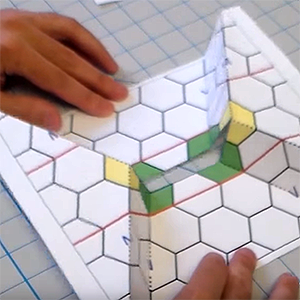 Toen Castle
Toen CastlePhysics, University of Pennsylvania
“The Mathematics of Paper”
Toen will not be talking about doing math problems on paper nor will he be talking about the economics of selling newspapers in this internet age. He will talk, instead, about some profound mathematics behind our everyday trouble with wrapping oddly-shaped gifts and making maps. What is his solution? KIRIGAMI! A variant of origami, where cutting is allowed as well as folding, kirigami allows us to solve these problems and much more. Demos will be given.
World Cafe Live
3025 Walnut Street
Philadelphia, PA 19104
6:00pm
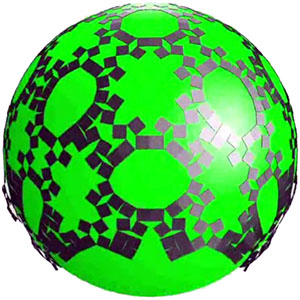 Randall Kamien
Randall KamienPhysics, University of Pennsylvania
“The Mathematics of Paper”
Randy will not be talking about doing math problems on paper nor will he be talking about the economics of selling newspapers in this internet age. He will talk, instead, about some profound mathematics behind our everyday trouble with wrapping oddly-shaped gifts and making maps. What is his solution? KIRIGAMI! A cousin of origami, kirigami allows us to solve these problems and much more.
Stoney’s British Pub
3007 Concord Pike
Wilmington, DE
7:30pm
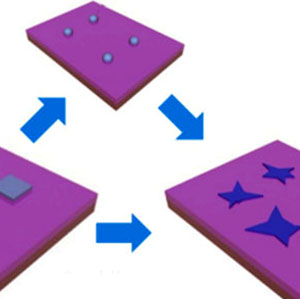 Carl Hugo Naylor
Carl Hugo NaylorPhysics, University of Pennsylvania
“Beyond Graphene: MoS2, a New Platform for Science”
Graphene, the once acclaimed holy grail of materials in the two dimensional world has attracted a tremendous amount of interest in the past decade. However, the more we learn about this material, the more we realize the limits in its applications. Hence, the scientific community’s rush to discover the next Graphene. MoS2 has emerged as a true potential candidate to fill the big shoes of Graphene. In my talk, I plan to introduce MoS2 and how its exciting properties can be applied towards novel systems.
World Cafe Live
3025 Walnut Street
Philadelphia, PA 19104
6:00pm
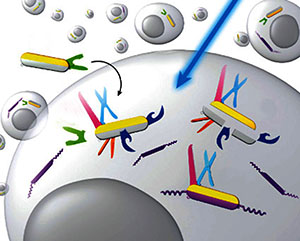 Ivan J. Dmochowski
Ivan J. DmochowskiChemistry, University of Pennsylvania
“Designing Light-Responsive Molecules for Biomedical Applications”
Over the past 200 years–since the first synthesis of urea by Wöhler (in 1828)–chemists have synthesized a wide variety of molecules, many with biological significance. Today, my laboratory designs multi-functional molecules, with specially tailored physical and biological properties. This work is very similar in concept to architecture, but at the molecular scale. Our work has focused on developing light-activated small- and large molecules that make it possible to address several long-standing problems in Biology and Biomedicine. In this talk I will highlight our efforts at an exciting frontier in molecular pharmacology–the identification of a functionally relevant protein target of general anesthetics. I will also highlight our efforts to advance the field of transcriptomics by designing light-activated probes to elucidate how RNA populations vary between different cells in living tissue.
